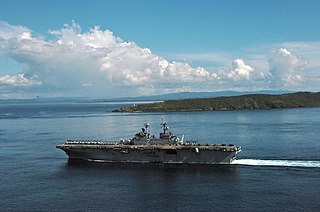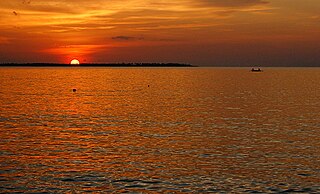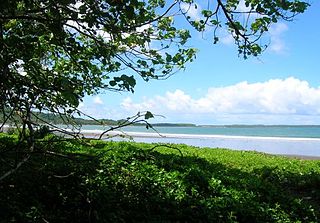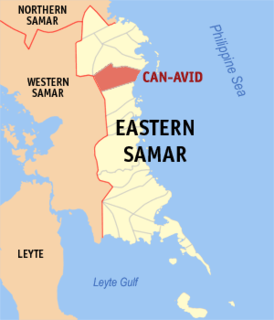
Abuyog, officially the Municipality of Abuyog, is a 1st class municipality in the province of Leyte, Philippines. According to the 2015 census, it has a population of 59,571 people.

Hernani, officially the Municipality of Hernani, is a 5th class municipality in the province of Eastern Samar, Philippines. According to the 2015 census, it has a population of 8,573 people.

San Julian, officially the Municipality of San Julian, is a 5th class municipality in the province of Eastern Samar, Philippines. According to the 2015 census, it has a population of 14,498 people.

Catarman, officially the Municipality of Catarman,, is a 1st class municipality and capital of the province of Northern Samar, Philippines. According to the 2015 census, it has a population of 94,037 people.

Barugo, officially the Municipality of Barugo, is a 4th class municipality in the province of Leyte, Philippines. According to the 2015 census, it has a population of 32,745 people.

Almagro, officially the Municipality of Almagro, is a 5th class municipality in the province of Samar, Philippines. According to the 2015 census, it has a population of 8,942 people.

Pagsanghan, officially the Municipality of Pagsanghan, is a 5th class municipality in the province of Samar, Philippines. According to the 2015 census, it has a population of 7,945 people.

San Jose de Buan, officially the Municipality of San Jose de Buan, is a 4th class municipality in the province of Samar, Philippines. According to the 2015 census, it has a population of 7,769 people.

San Sebastian, officially the Municipality of San Sebastian, is a 6th class municipality in the province of Samar, Philippines. According to the 2015 census, it has a population of 8,057 people.

Talalora, officially the Municipality of Talalora, is a 6th class municipality in the province of Samar, Philippines. According to the 2015 census, it has a population of 8,057 people.

Tarangnan, officially the Municipality of Tarangnan, is a 4th class municipality in the province of Samar, Philippines. According to the 2015 census, it has a population of 24,992 people.

Capul, officially the Municipality of Capul, is a 5th class municipality in the province of Northern Samar, Philippines. According to the 2015 census, it has a population of 12,679 people.

Catubig, officially the Municipality of Catubig, is a 3rd class municipality in the province of Northern Samar, Philippines. According to the 2015 census, it has a population of 33,025 people.

Laoang, officially the Municipality of Laoang, is a 2nd class municipality in the province of Northern Samar, Philippines. According to the 2015 census, it has a population of 61,359 people.

Borongan, officially the City of Borongan,, or simply referred to as Borongan City, is a 4th class city and capital of the province of Eastern Samar, Philippines. According to the 2015 census, it has a population of 69,297 people.

Can-avid,, officially the Municipality of Can-avid, is a 4th class municipality in the province of Eastern Samar, Philippines. According to the 2015 census, it has a population of 21,015 people.

General MacArthur, officially the Municipality of General MacArthur, is a 5th class municipality in the province of Eastern Samar, Philippines. According to the 2015 census, it has a population of 14,550 people.

Guiuan, officially the Municipality of Guiuan, is a 2nd class municipality in the province of Eastern Samar, Philippines. According to the 2015 census, it has a population of 52,991 people.

Taft, officially the Municipality of Taft, is a 4th class municipality in the province of Eastern Samar, Philippines. According to the 2015 census, it has a population of 18,915 people.

Catbalogan, officially the City of Catbalogan, or simply referred to as Catbalogan City, is the capital of Samar, Philippines. According to the 2015 census, it has a population of 103,879 people.





















